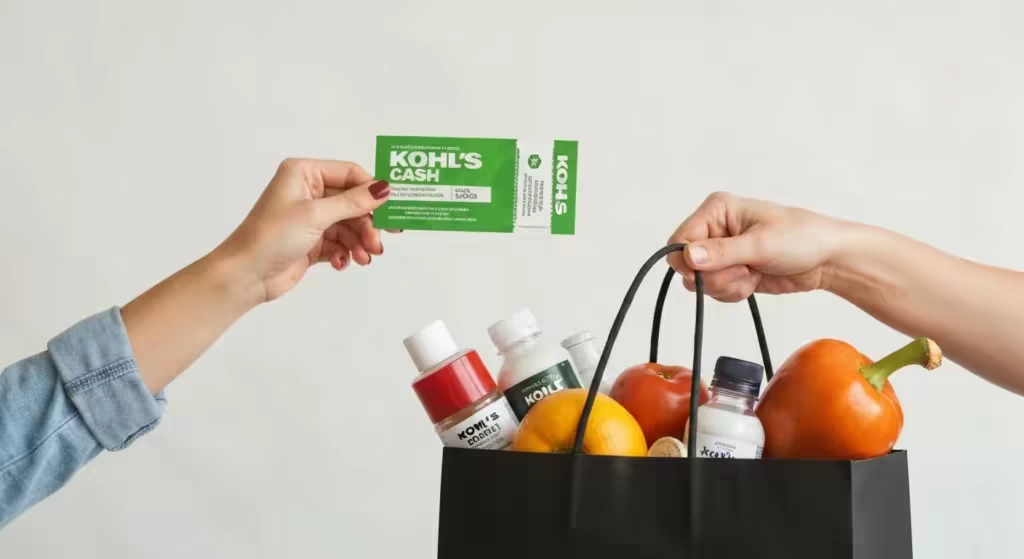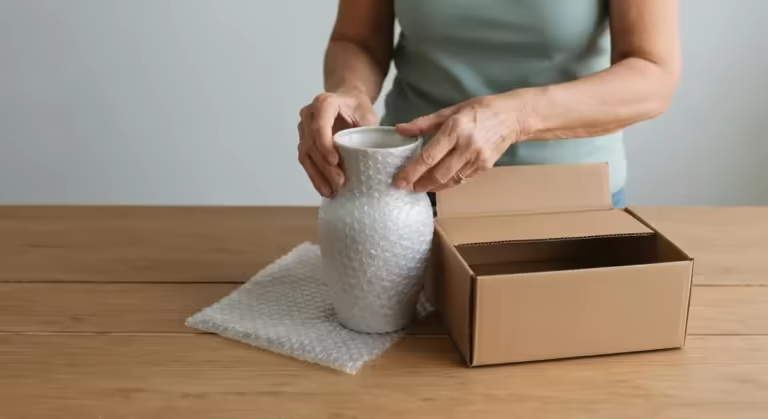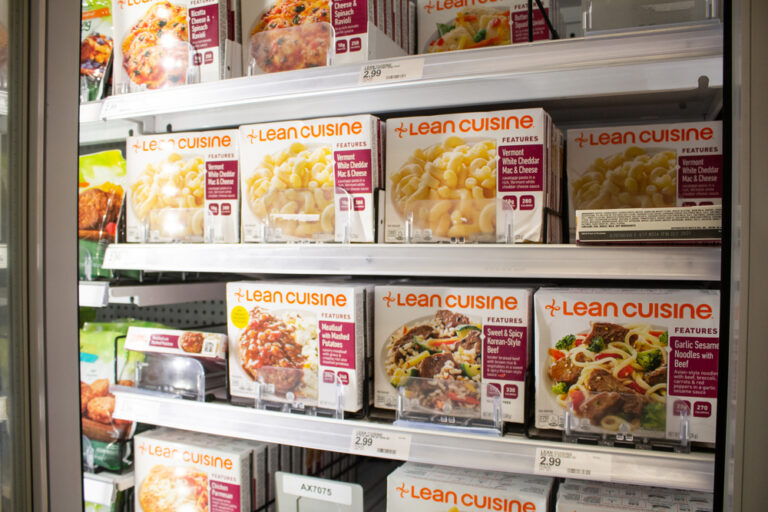Shopping trap: popular grocery products not worth your cash
Ugh, shopping! Sometimes I wish for the golden fish to appear and make my day prettier and tell me that my fridge is full all year round so I won’t have to go to do my weekly shopping. It’s a universal chore that can feel like a real battle against time, temptation, and a constantly shrinking budget. The bright lights, the endless aisles, the sheer number of choices—it can all be a bit overwhelming. But then I remember that we live in the real world, and this is an adult task, and there is no possible way to escape it. Mastering the grocery store is a skill, and like any skill, it gets easier with a little practice and some inside knowledge.
With so many products that have colorful and enticing packaging, we often get into the trap of buying what we don’t really need. Marketers are experts at grabbing our attention with clever designs, buzzwords like “natural” or “gourmet,” and strategic product placement. And when we get to checkout… sheesh! That moment when the cashier announces the total and you do a double-take, wondering how a few bags of groceries could possibly cost that much, is all too familiar. In today’s article, with the help of shopping experts, I managed to create a list of some grocery products that aren’t worth your cash even if they seem a bargain. This isn’t just about saving a few dollars; it’s about becoming a smarter, more mindful consumer. I think you’ll be surprised…

Chips
Chips are tasty, addictive, and always an easy-to-grab snack whenever we watch our favorite TV show. The combination of salt, fat, and that satisfying crunch is engineered to make you want more. You know the saying, “you can’t eat just one,” and it’s absolutely true! However, as you may probably know, they aren’t exactly healthy or nutritious in any way. They’re essentially empty calories that offer very little in terms of vitamins, minerals, or fiber. We put them in the first place of unnecessary grocery products for a reason!
No matter if we talk about potato or corn chips, they’re all the same. They are often fried in unhealthy oils and loaded with sodium. Instead of spending $6 on a bag of air that’s half-full of chips, why not try to make your own at home? It’s incredibly easy! Thinly slice some potatoes (or sweet potatoes for extra nutrients!), toss them with a little olive oil and your favorite spices like paprika, garlic powder, or rosemary, and bake them in the oven or an air fryer until crispy. With your favorite dip, voila! A much healthier snack that costs a fraction of the price and tastes even better because it’s fresh.
Beef jerky
Beef jerky is tasty and easy to munch on wherever you are, and luckily, it is so easy to find on almost every supermarket shelf. It’s often marketed as a high-protein, “healthy” snack perfect for hiking or a post-gym boost. But guess what? When it comes to other grocery products that help you boost your protein intake, jerky isn’t cheap at all. Check the price per ounce next time you’re in the store; you’ll be shocked at how it compares to other protein sources. Especially if you plan on bulking yourself this season. Furthermore, many commercial jerky brands are loaded with sodium, sugar, and nitrates as preservatives.
If you want to get more protein during the day but get tired of eating chicken breast over and over again, I’d suggest checking out protein powder. It might seem costly at first, but a bag of 35 ounces will last quite a few weeks. The cost per serving is significantly lower than a bag of jerky, and it’s far more versatile. You can mix it into shakes, stir it into oatmeal or yogurt, or even add it to pancake batter. It’s an efficient and budget-friendly way to meet your protein goals without the excess salt and preservatives.
You don’t know which protein powder is best for muscle growth. No worries! I got you. Impact Whey Protein is available on Amazon in nine different flavors. For one serving shake, you will get 22 grams of protein. Oh, and it’s also gluten-free!
Baked goods
Oh, dear! That smell from the baked goods welcomes me whenever I step into the grocery store. It’s a strategic move, often placing the bakery right at the entrance to lure you in with the intoxicating aroma of sugar and butter while your willpower is still high. But I have to keep my hands away from them! Why? Well, they’re among the super expensive grocery products, even if you buy more than one. A single muffin can cost upwards of $3, while a small box of four might be $10. You rarely get discounts, and when you do, they’re probably not that fresh anyway. Many items are simply baked from frozen dough or have been sitting under a heat lamp for hours.
So you could just Google some recipes and bake your batch of fresh cookies or muffins at home. Think about it: for the price of two store-bought muffins, you could buy all the ingredients to make a dozen from scratch. You get to control the amount of sugar and fat, use healthier ingredients like whole wheat flour or applesauce, and there’s nothing quite like the satisfaction and genuine aroma of treats baking in your own oven. Even the taste is going to be different! And they’ll be healthier as well.
Sparkling water
A lot of people, when they want to give up soda and unhealthy sugary beverages, switch to sparkling water. It’s been marketed brilliantly as a sophisticated, zero-calorie alternative. It might seem like a good idea, but is it really? Not so much. Sparkling water is among those unnecessary grocery products you should steer clear of. The cost adds up quickly, with fancy brands in glass bottles costing several dollars each. Even a basic case can be surprisingly expensive compared to the alternative.
It is very costly compared to your tap water, and yeah, you will say it is boring to drink tap water with no taste, but you can actually make it tastier by adding fruits and some fresh mint leaves. Get creative! Infuse a pitcher of water with slices of lemon and cucumber, a handful of fresh raspberries, or even a sprig of rosemary. An infuser water bottle can be a great small investment for flavored water on the go. Trust me, you will save a lot more by doing this, and you’ll avoid the potential dental erosion that can be caused by the carbonic acid in sparkling water.
Oreos
Biscuits in any shape and flavor are tasty. Especially Oreos! The classic cookie is a masterclass in marketing, constantly reinventing itself with an endless parade of limited-edition flavors that create a sense of novelty and urgency. With so many available flavors and colorful packages, it is almost impossible to keep your hands away from grabbing them from the shelf. They tap right into our sense of nostalgia and our craving for a simple, sweet treat.
But you’re better off! They’re super expensive now, and they have so many added sugars that your teeth won’t like them. A quick look at the ingredient list reveals a cocktail of sugar, high-fructose corn syrup, and artificial flavors with very little nutritional value. Instead of reaching for the Oreos, consider healthier alternatives that can satisfy a sweet tooth, like a square of high-quality dark chocolate, a bowl of Greek yogurt with berries and honey, or even some homemade no-bake energy bites made with oats, dates, and peanut butter.

Name-brand coffee
I love a good cup of coffee first thing in the morning, but that doesn’t mean I am willing to pay an arm and a leg for it. Big-name coffee brands spend a fortune on advertising to build brand loyalty, making you feel like their product is superior. In reality, you’re often paying a premium for the name on the package, not necessarily for better beans. Next time you’re going to do your grocery shopping, pass by the coffee shelves and compare the prices of store brands or bulk bins to the major labels.
Purchasing whole Arabica beans from a big-box supplier or warehouse shop will give your coffee the gourmet café flavor and is the primary ingredient in most name-brand mixes. The real secret to great coffee is freshness. Pre-ground coffee starts to lose its flavor and aroma the moment it’s ground. Use them in your French press, reusable K-Cup, or conventional brewer after grinding them at home to ensure freshness. The difference in taste is remarkable, and you’ll save a significant amount of money in the long run.
Energy drinks
As with any other grocery products I’ve mentioned so far, a lot of people crave energy drinks. And with a reason! They’re flavored with a ton of interesting stuff, and no matter how unhealthy they are, they taste good. Period. They promise a quick fix for fatigue with slick marketing and extreme sports sponsorships. But instead of paying $3 for a can of sugary, chemical-laden liquid, you better buy some green tea leaves or stick to your regular coffee cups per day. That quick boost comes with a hefty price, both for your wallet and your health.
A single 8.4-ounce can of Red Bull has around 80 milligrams of caffeine, which is equivalent to a cup of coffee. However, it also comes packed with sugar or artificial sweeteners, and a long list of other stimulants and artificial ingredients that can lead to a nasty crash later on, not to mention potential jitters and heart palpitations. A simple cup of black coffee or a mug of green tea will give you the caffeine lift you need without the added junk and at a much lower cost.
Frozen French fries
That’s a huge no-no! The convenience is tempting, I get it. A bag in the freezer ready to be thrown onto a sheet pan seems like a great shortcut on a busy night. But what you gain in a few minutes of prep time, you lose in quality, health, and money. Instead of scrolling on social media, take those 10 or 15 minutes to cut your potatoes into French fry shapes. Frozen fries are often coated in strange starches, extra oils, and a ton of sodium to make them crispy and last longer. It’s healthier and more economical, so don’t fall into the trap of buying a bag of frozen French fries!
Animal crackers
You’ll probably end up buying these cuties just because nostalgia hits you. They take us right back to childhood, making them a sentimental impulse buy, especially if you’re shopping with kids. But I tell you that they’re not worth your money. Frequently high in sugar and simple carbohydrates, these little creatures don’t provide much in the way of fiber or micronutrients. They are, for all intents and purposes, just cookies shaped like animals, designed to be eaten in large quantities. Yes, I totally agree; they’re super tasty. That’s why you keep eating, and you’ll finish half the box before you realize it.
So, I’d definitely suggest you go for a healthier snack to munch on next time you go to the supermarket. If you’re craving something crunchy and comforting, try whole-grain crackers with a slice of real cheese, apple slices with peanut butter, or a small handful of nutrient-dense almonds or walnuts. You’ll get more sustained energy and actual nutritional benefits for your money.
Shredded cheese
Yes, it’s convenient to buy already shredded cheese, but honestly, you won’t save a lot of time if you do that. In fact, you’ll be paying a significant markup for the privilege of not grating it yourself. Shredded cheese is among the grocery products that cost a ton of money for what they offer. To prevent the shreds from clumping together in the bag, manufacturers coat them with additives like potato starch and even cellulose (which is essentially wood pulp). A bag of this cheese has additives that help keep it “fresh” in the bag. Trust me, it won’t taste as good, and these anti-caking agents can also prevent the cheese from melting smoothly, resulting in a greasy or grainy texture. You’re better off with a 16-ounce block of cheese (which is considerably cheaper per ounce) to grate it yourself.
Chicken stock
One of the grocery products you want to stay away from is chicken stock. While it can be very tempting to buy something that’s already cooked for you, chicken stock in a can or carton is a prime example of paying for something you can easily make for practically free. More importantly, commercial stock is by far the unhealthiest thing to eat, often containing immense amounts of sodium. Even the “low-sodium” versions can be quite salty, and many contain MSG or other flavor enhancers. You can easily make your stock at home for less money and less salt.
Salad dressings and dips (salsa, guacamole)
Both dips and salad dressings are better to make in your kitchen. Those bottles of ranch and Italian dressing, or tubs of pre-made guacamole and salsa, are convenient but come with major downsides. They are often loaded with unhealthy fats, high-fructose corn syrup, preservatives, and artificial flavors. By doing this, you will avoid all the unhealthy additives and the pack of calories that come with the prepacked version. A simple vinaigrette takes less than two minutes to whisk together with oil, vinegar, and seasonings. Fresh guacamole just needs avocado, lime juice, salt, and maybe some onion and cilantro. It’s also very affordable in terms of both money and time since they are both easy to make and don’t cost a lot.
Checkout impulse buys
There we go! This is the final boss of saving money at the grocery store. If you want to save money on your groceries, you must stay away from impulse buys at all costs. After an hour of making dozens of decisions throughout the store, you experience “decision fatigue,” which lowers your willpower. Retailers know this. Leave that pack of Orbit gum where it belongs on the shelf! Candy and other sweets are positioned near the checkout line to entice you to buy them while you’re tired and bored. It’s not just candy; it’s also magazines, sodas, and other small, high-margin items. Avoid falling for this well-worn scam. Go back to the candy department and stock up on gum if you really need it, where you can buy a multi-pack for a much better price.
What other grocery products are so tempting, but you should never buy them? Is it pre-cut fruit, bottled iced tea, or single-serving yogurts? Share your money-wasting culprits and money-saving tips! Tell me in the comments.
Do you want more frugal advice? Then you’re going to be interested in reading how to Save on Air Conditioning Costs.














